
MGO vs UMF
MGO and UMF Ratings Explained If you have been trying to assess the strength of Manuka Honey products, you may have noticed two different labels on the honey containers. One being UMF, the other MGO. MGO ratings refer to the level of Methyglyoxal in the honey. Methyglyoxal is a marker of Manuka honey but it does not cause the non-peroxide activity. UMF is an internationally registered trademark that can be used only by licensed users who meet set criteria which include auditing and monitoring to ensure the product is natural, unadulterated, Manuka honey that has the unique non-peroxide antibacterial activity and is true-to-label claim. All types of honey have a very mild antiseptic property because they contain hydrogen peroxide. It is only Manuka Honey that has the additional and more powerful antibacterial property.
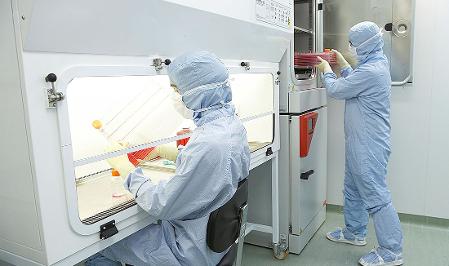
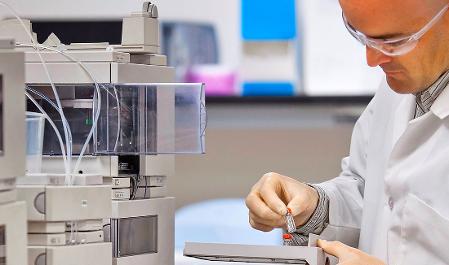
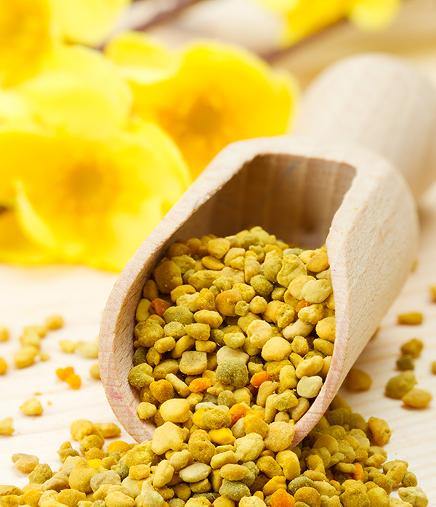
What is Bee Pollen?
Bee Pollen is made by honeybees, and is the food of the young bee. It is considered one of nature's most completely nourishing foods as it contains nearly all nutrients required by humans. Bee-gathered pollens are rich in proteins (approximately 40% protein), free amino acids, vitamins, including B-complex, and folic acid.
Bee pollen is a complete food and contains many elements that products of animal origin do not possess. Bee pollen is more rich in proteins than any animal source. It contains more amino acids than beef, eggs, or cheese of equal weight. About half of its protein is in the form of free amino acids that are ready to be used directly by the body.
It is important to recognize that a one teaspoon dose of pollen takes one bee working eight hours a day for one month to gather. Each bee pollen pellet, contains over two million flower pollen grains and one teaspoonful contains over 2.5 billion grains of flower pollen.
Dr. Gabriel Cousens MD, has listed bee pollen as one of his 22 most recommended food energies. Bee Pollen can be used medicinally for a wide range of conditions from prostate health to skin conditions and can help correct specific nutritional imbalances within the body.
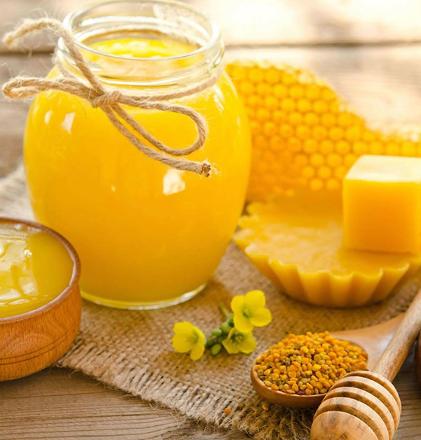
What is Propolis?
Propolis is a natural resin collected from the buds of conifers and other trees by honeybees. It is used by bees to seal walls and strengthen combs of hives, as well as to embalm dead invaders. It is a sticky, greenish-brown mass with a slight aromatic odor.
Propolis is a sticky substance that bees make which is better known as "bee glue". The process begins when an expert propolis-making bee gathers resin from cone-producing evergreen trees or from the buds of trees. The bee will gather this sticky sap when the proper weather makes it pliable and soft. After the bee gathers enough, he blends the resin with wax flakes that he stores in the gland of his abdomen. After the bee has shaped it into a ball, he tucks it into the pollen basket that is attached to his leg. The bee will continue until the basket is full, then take it back to the hive. At this point, the propolis is unloaded and used to patch up holes in the hive. Bees also use propolis as an antiseptic barrier covering invaders with the sticky substance to prevent hive contamination.
Humans have been using this as an antiseptic since the times of ancient Egypt. Applying propolis to wounds greatly improved healing and throughout the centuries, this substance has been shown to have other healing properties as well. In the last several decades, health practitioners have found even more positive uses for propolis as a natural supplement. Propolis has been shown to increase the effects of other antibiotics like penicillin and can also strengthen the immune system. Studies are now being done to see if propolis can become an effective treatment for the prevention of certain types of cancer.
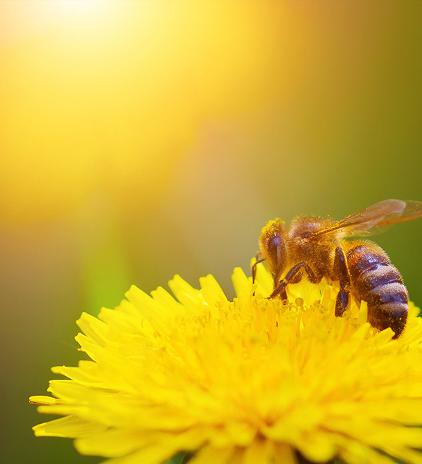
What is Royal Jelly?
Royal jelly is a nutritious jelly produced by worker bees. It is fed to larvae worker bees and drones for the first three days of their lives to stimulate growth. Larvae that are fed royal jelly for a prolonged period of time grow up to be queen bees. In fact, the queen eats exclusively royal jelly throughout her life.
Royal Jelly as a Green Superfood
Royal jelly is a food product. It contains calories due to its protein, carbohydrate, and fatty acid content. It doesn’t take much imagination to believe that royal jelly has a wide variety of unique health benefits:
- Enhances the immune system
- Promotes wound healing
- Has antitumor/anticancer properties
- Lowers cholesterol levels
- Increases fat metabolism
- Is a powerful antioxidant
- Regulates blood sugar levels
Royal Jelly, Tumor Suppression, and Cancer Fighting
Royal jelly has strong cancer and tumor suppressing abilities. Its been successfully used in treatments for leukemia, and several studies have shown that its effective at reducing the adverse side effects of chemotherapy drugs.
Immune System Enhancement
Royal jelly helps the body produce more immune cells, fight bacteria and heal its wounds faster. It mostly does this with a unique blend of proteins that are unique to royal jelly.
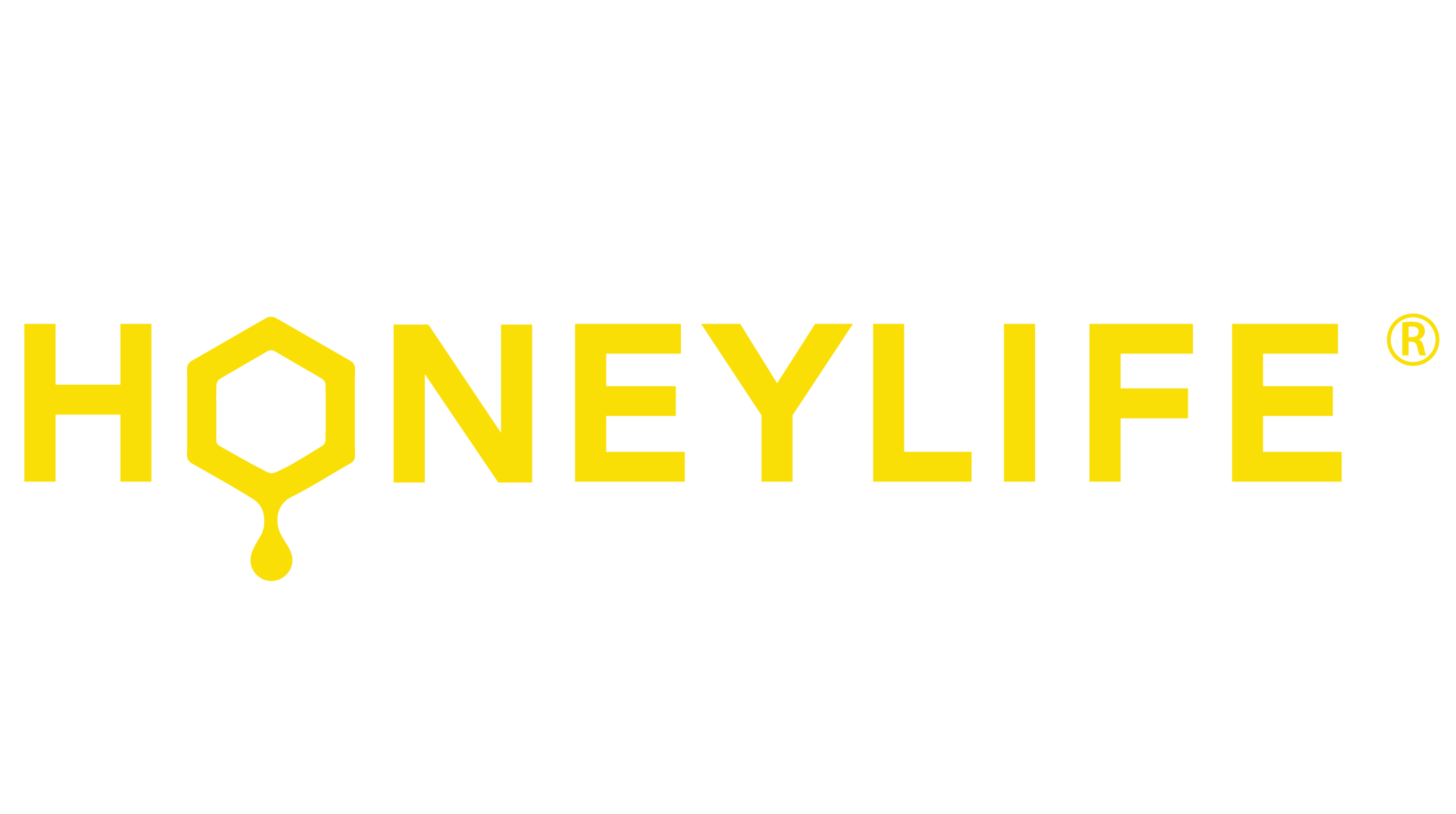
All Rights Reserved by Honeylife
